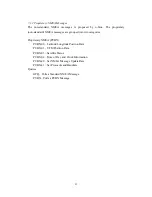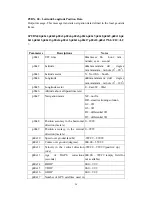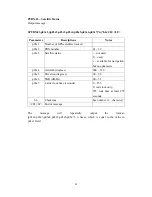
66
R8 IEEE754
Double
Precision
8 -1*2
1023
~ 2
1023
~Value*2
-53
CH ASCII / ISO
8859.1 Encoding
1
Table 7.1 The types of data.
7.2.2 Classification of UBX Messages
The u-blox proprietary messages are classified into 9 groups. Based on a specific
topic, each group contains the associated information. They are summarized in Table
7.2.
Class ID
Class Name Class No (Hex)
Comment
ACK
Acknowledgement
0x05
Respond to the input request: Ack/Nack
AID
Aiding
0x0B
AGPS or other similar functions
CFG
Configuration
0x06
Configuration input: port setting, DOP mask, etc.
INF
Informative
0x04
Printf-Style messages: Error, Warning , Notice
MON
Monitor
0x0A
Monitor the stack usage, CPU load, task status,
etc.
NAV
Navigation
0x01
Navigation information: PVT, DOP, Course
RXM
Receiver Manager
0x02
Receiver manager messages: Pseudorange,
Channel status
TIM
Timing
0x0D
Time pulse data: 1 PPS
UPD
Update
0x09
Firmware update messages
Table 7.2 UBX message classes.
7.2.3 Responses to the Users’ Inputs
Basically, there are two kinds of module’s responses for the users’ requests:
Acknowledgement
and
Polling Mechanism
. When users send the Class CFG messages
to the module, the module will reply the Acknowledgement or Not Acknowledgement
message based on whether the desired message is implemented correctly or not. For
the Polling Mechanism, the messages that can be output also can be polled. In this
particular protocol, the output and polling requests use the same message. The
difference between both is that, for the polling purpose, the message doesn’t contain
the DATA, i.e., the value of the DATA LENGTH is 0.
NOTE:
The default settings for output the binary messages from the module are on
the comm. port 2 with the baud rate 57600 bps.






























